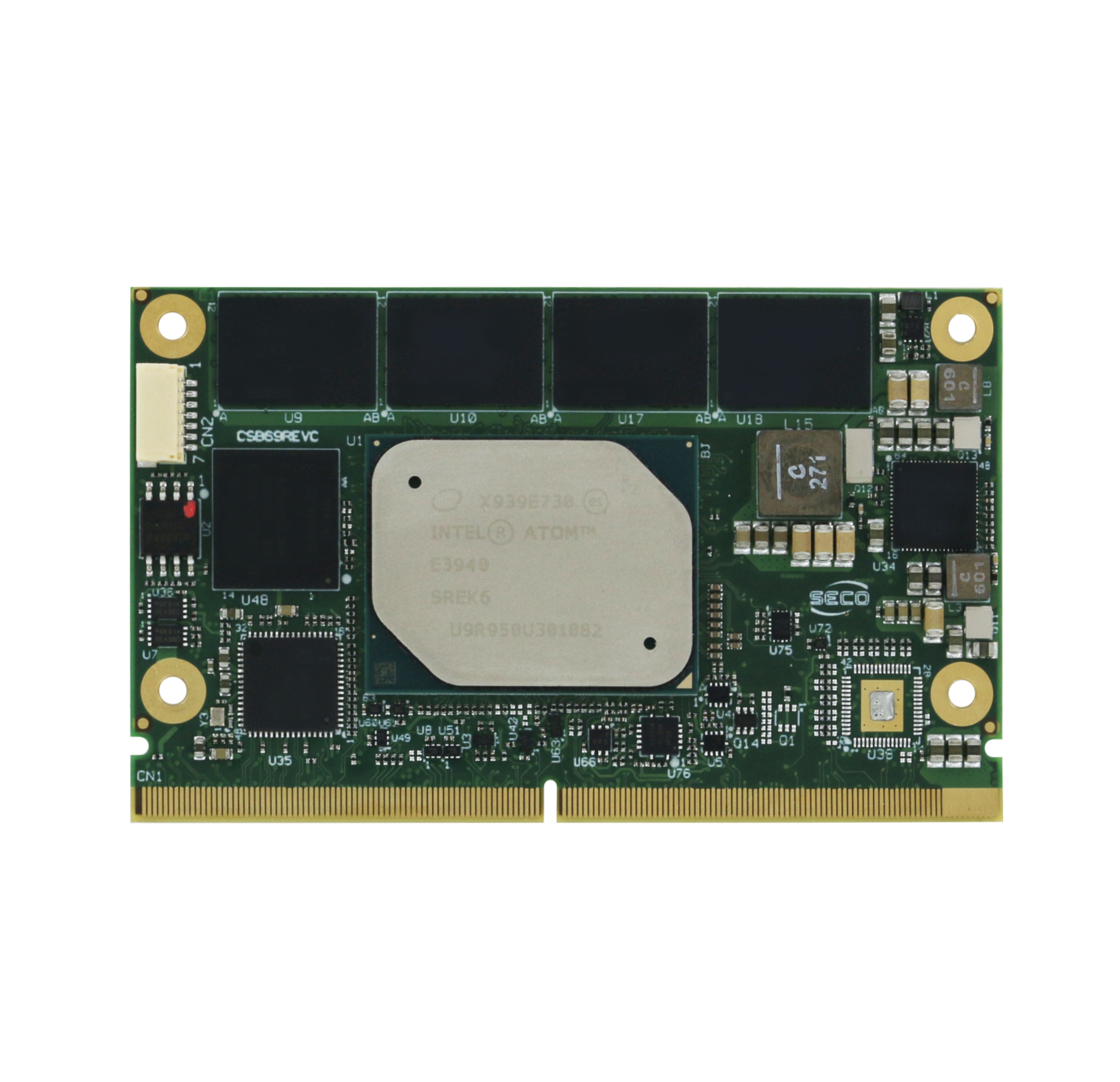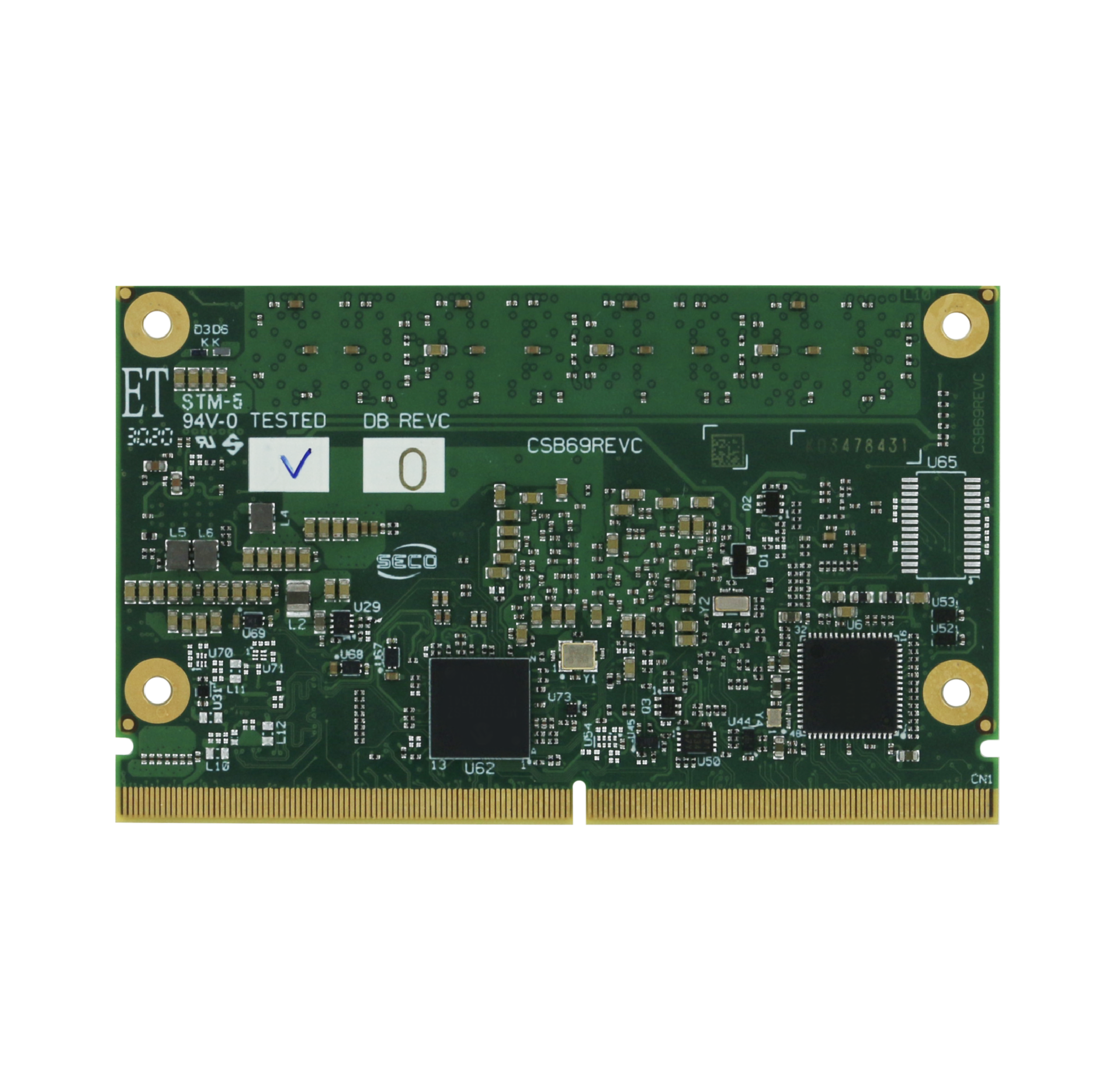SOM-SMARC-APL (B69)


Depending on the configuration and following revisions, the features of the board are subject to change. For detailed information on hardware specifications, please visit www.seco.com
SOM-SMARC-APL is a SMARC Rel. 2.0 compliant module with the Intel® Atom® X Series, Intel® Celeron® J / N Series and Intel® Pentium® N Series (formerly Apollo Lake) Processors. This high performance, low power and feature-rich solution is able to run up to 3 independent displays, and it features Dual Channel Soldered Down LPDDR4-2400 memory (up to 8GB), 2 x Gigabit Ethernet interfaces and 2 x MIPI CSI interfaces.
For ordering purposes, the SOM-SMARC-APL is referred to by its base code, "B69".
Technical Documents
At the following Links you will find documentations like Manual and Rev. specific documents.
Manual
Datasheet
What is loaded in a standard module?
Off-the-shelf products are shipped with a standard in-house-developed software. The definition of standard, in this case, is “the environment which SECO adopts for validation”. Anyway, custom in-house-developed software with different defaults can be built. Contact your reference sales for further information.
Clea OS
All off-the-shelf products are shipped with Clea OS preinstalled as the standard software environment. Clea OS is a versatile and robust Linux Operating System framework designed specifically for industrial embedded devices. Based on the open source Yocto Project, Clea OS offers a flexible and customizable platform that can be tailored to meet the specific needs of various hardware architectures and applications.
Starting with Linux Kernel 6.6, the Board Support Package (BSP) for this board is fully integrated into Clea OS. It ensures high security and stability through features like OTA (Over-the-Air) updates, dual partitions, and fallback procedures. Additionally, Clea OS includes a complete device manager for seamless cloud communication, enabling centralized management of product fleets.
Documentation
For a complete explanation of Clea OS and detailed installation instructions, refer to the official documentation:
Download Clea OS Images
To quickly get started, download the latest complete prebuild Clea OS images (or other binaries like U-Boot, Linux Kernel, SDKs) from the official release page:
Build Clea OS
The source code for Clea OS can be found at the following Gitlab organization. To build a complete BSP image from source you can check the Get Started pages of the documentation.
Downloads
Here you can find the latest releases:
| BIOS | B69_Official_BIOS_1-19-01.7z |
|---|---|
| BIOS Tools | seco_apollolake_tools.7z |
| Driver WIN10 2016 LTSC | seco_apollolake_drivers_win2016.7z |
| Driver WIN10 2019/2021 LTSC | seco_apollolake_drivers_win10_2019_2021.7z |
| Driver Ubuntu I2C-SPI | seco_apollolake_drivers_ubuntu_i2c-spi.7z |
| Yocto BSP | seco_apollolake_yocto-pyro_bsp1-0.7z |
| EAPI | EAPI Wiki |